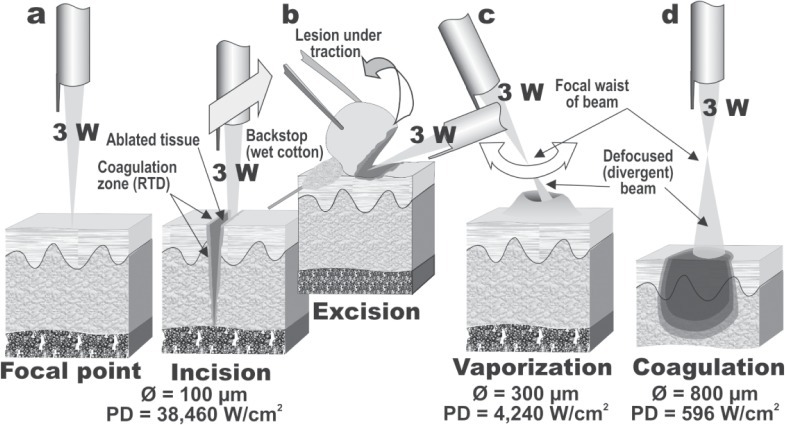Fig. 2:
Manipulation of the biological effect of the laser beam through moving the handpiece towards or away from the focal point of the beam, shown in 2a. (2b): Linear motion of the handpiece can give laser incision. Note the zone of RTD adjacent to the ablated tissue. The focused beam can also be used to excise tissue en bloc, with traction being applied to the lesion as indicated. Note the use of a wet cotton bud as a backstop to prevent damage to the normal tissue behind the lesion. (2c): By slightly defocusing the beam, and reducing the irradiance, bulk vaporization of tissue is achieved, again leaving a zone of RTD around the ablated tissue. (2d): By moving the handpiece further away from the tissue, a dramatic drop in irradiance is achieved which will result in nonablative coagulation of tissue. This is useful for swift hemostasis of small bleeding or oozing vessels.

